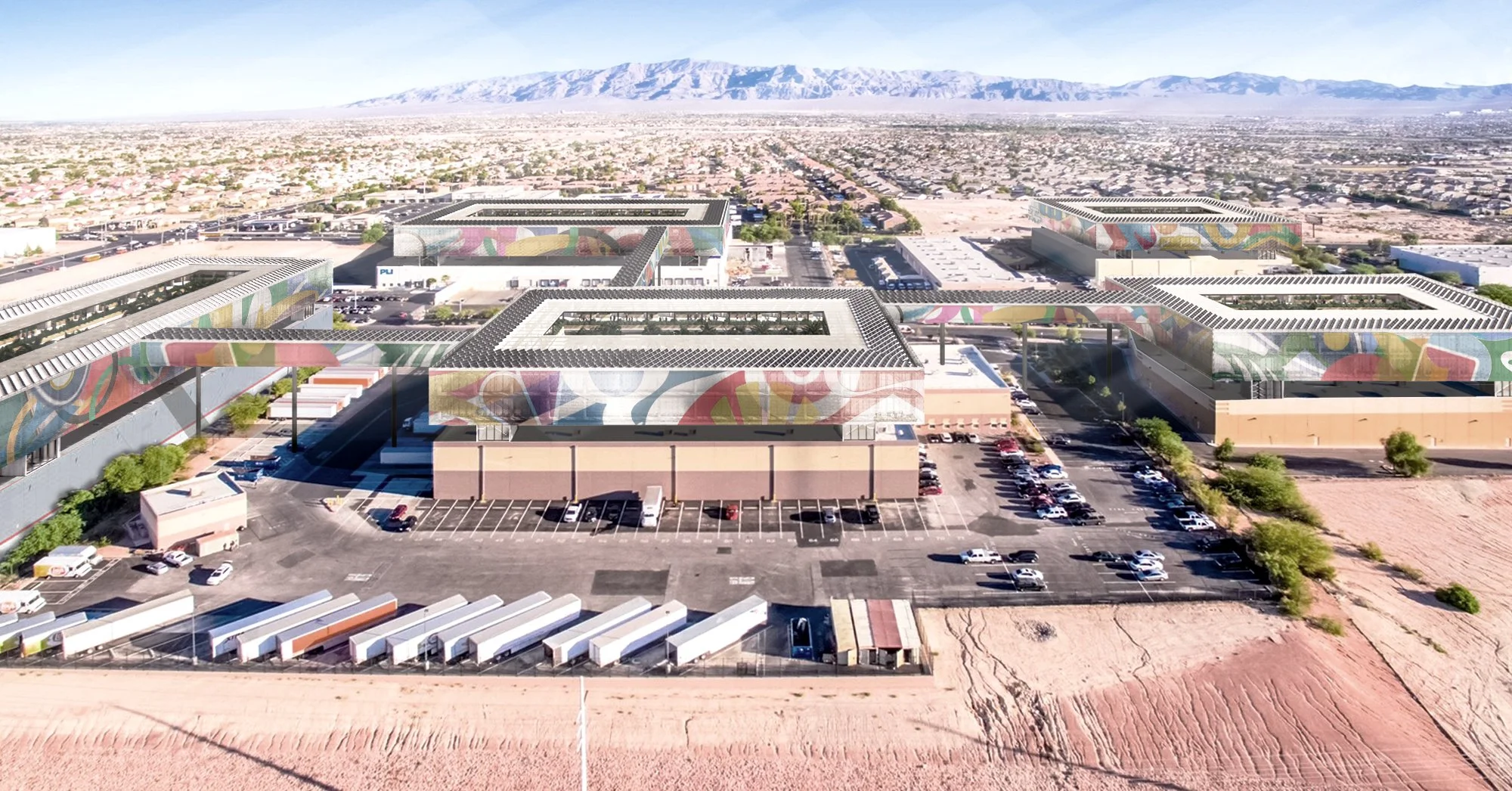Known as the city of sin, Las Vegas is internationally renowned for its night life, and adult entertainment. Each year, millions of tourists flock towards it in the pursuit of bedazzled dreams, and delirious ambitions for wealth and excitement. It is this very fervor that has propelled the metropolis into a global hub for consumerism...
Tucked behind the glimmering lights of the Strip lies the countless blocks of warehouse networks that proliferate throughout the city. Due to soaring demands on supply chains, and lenient tax laws, Las Vegas has become a distribution haven for the Western United States. Many of these networks are expansive infrastructures that occupy prime real estates within the grid. As such, many residential developments have been systematically pushed outwards into urban sprawls that are unaffordable, and places an arduous strain on the environment.
This proposal seeks to counteract current urban models, by building upon the spaces above the warehouses. The idea is to increase the floor area ratio of underutilized land as a means to generate density, but at the same time, keep the existing commercial entities intact. What results is a new residential datum that serves as a catalyst for more affordable housing. Each massing consists of modular units whose quantity is dependent upon the footprint of the site below. The units are inward looking, and formed around a central garden terrace with amenities flanking on either sides. The organization champions a communal type of co-habitation, as a means to lessen the pressures on the city’s framework. The façade consists of perforated metal panels that assist in moderating the intensities of the climate, as well as providing an advertising platform for all types of corporations. Circulation though sky-bridges and designated entries help to keep the disruption on the industries below to a minimal. Ultimately, the goal is to challenge and present a new housing typology specific to neighborhoods that are often overlooked by developers.


